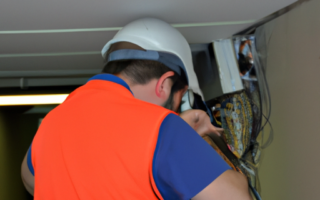The Importance of Regular Inspections in Identifying Health and Environmental Hazards
Regular inspections play a crucial role in identifying potential health and environmental hazards. These inspections are conducted to ensure that individuals and communities are protected from any harm that may arise from hazards in their surroundings. By conducting thorough inspections, authorities and organizations can identify and address potential risks before they escalate into major health or environmental crises.
Inspections help in identifying a wide range of hazards that can pose risks to both human health and the environment. For instance, in the case of industrial facilities, regular inspections can help identify issues such as inadequate waste management practices, improper storage of hazardous materials, or the release of pollutants into the air or water. All of these factors can have severe implications on public health and the environment.
Inspections also play a vital role in identifying potential health hazards in residential or commercial properties. By examining the building’s structure, including electrical systems, plumbing, and ventilation, inspectors can identify any potential risks that may lead to accidents or diseases. For example, they may discover faulty wiring that could cause electrical fires or detect mold growth that can lead to respiratory problems.
Furthermore, inspections contribute to the identification of environmental risks that can impact ecosystems and natural resources. Inspectors assess factors such as deforestation, pollution, and improper waste disposal, which can all have detrimental effects on biodiversity and natural habitats. By detecting and addressing these hazards early on, authorities can take the necessary steps to prevent further damage and protect the environment.
The information gathered through inspections serves as a foundation for implementing appropriate corrective measures. Once hazards are identified, responsible parties can take action to mitigate the risks and prevent potential harm. This may involve implementing stricter regulations, conducting cleanup operations, improving waste management practices, or educating individuals and businesses about safer practices.
In conclusion, regular inspections are of utmost importance in identifying and addressing potential health and environmental hazards. By conducting thorough inspections, authorities and organizations can ensure the safety and well-being of individuals and communities. The knowledge gained through these inspections allows for the necessary actions to be taken to mitigate risks and protect both human health and the environment.
How Inspections Safeguard Against Potential Health and Environmental Risks
Inspections play a crucial role in ensuring the safety of individuals and the environment. By conducting regular inspections, authorities can identify and address potential health and environmental hazards before they escalate into major risks.
One of the primary ways inspections help in safeguarding against potential health and environmental hazards is by assessing compliance with regulations and standards. Inspectors thoroughly examine facilities, equipment, and processes to ensure that they meet the required safety and environmental guidelines. This includes checking for proper storage and handling of hazardous materials, adequate ventilation systems, and proper waste management protocols.
Inspections also help in identifying any deficiencies or non-compliance issues that may pose health or environmental risks. Inspectors are trained to recognize potential hazards, such as inadequate safety measures, faulty equipment, or improper waste disposal practices. By spotting these issues, they can take immediate action to rectify them, preventing any potential harm to both human health and the environment.
Furthermore, inspections provide an opportunity for education and guidance. Inspectors not only identify hazards but also provide recommendations and guidance on how to address them effectively. This may include suggestions for implementing safety measures, enhancing employee training, or adopting more sustainable practices. By providing this knowledge, inspections help organizations improve their overall safety and environmental performance.
Another crucial aspect of inspections is promoting accountability. By conducting regular inspections, regulators hold organizations accountable for their actions and ensure compliance with laws and regulations. Organizations are more likely to prioritize safety and environmental concerns when they know they will be subject to inspections. This accountability helps create a culture of safety and environmental responsibility, reducing the likelihood of potential hazards in the first place.
In conclusion, inspections serve as a vital safeguard against potential health and environmental risks. They help identify and address hazards, assess compliance with regulations, and promote accountability. By conducting regular inspections and taking appropriate action, authorities can ensure the well-being of individuals and the protection of the environment.



